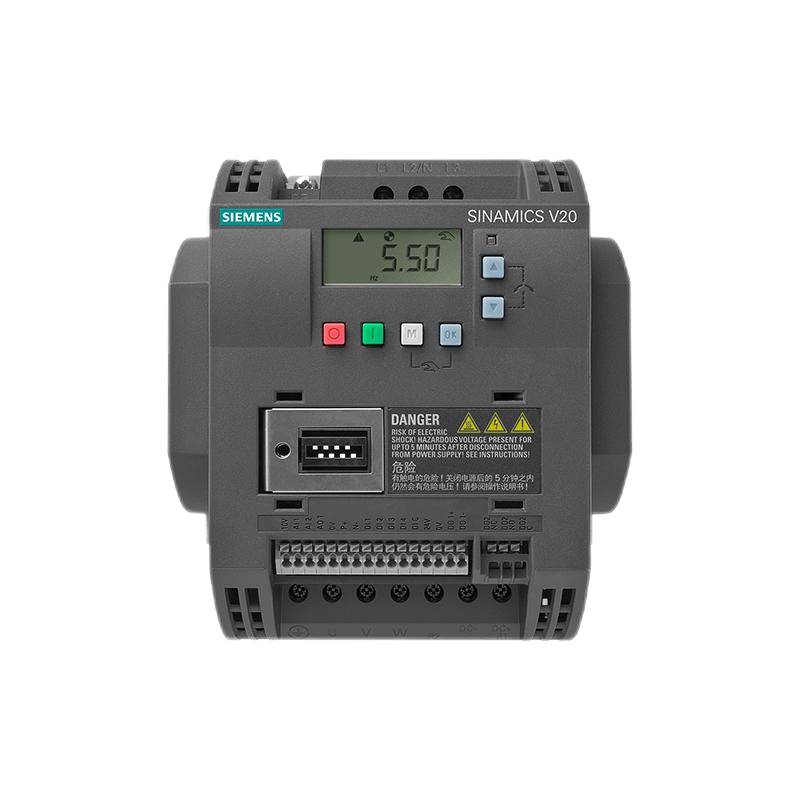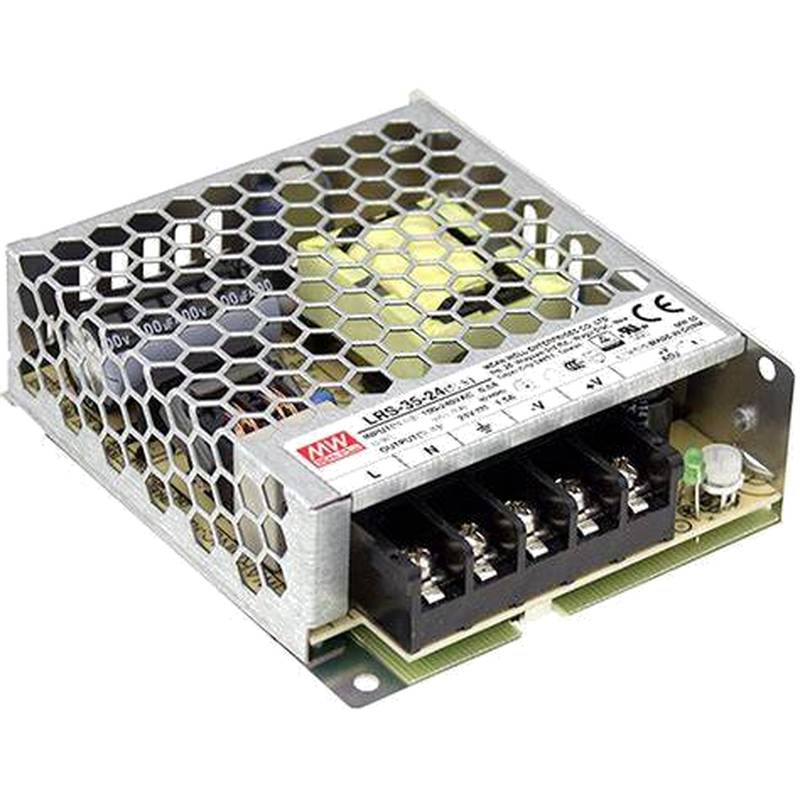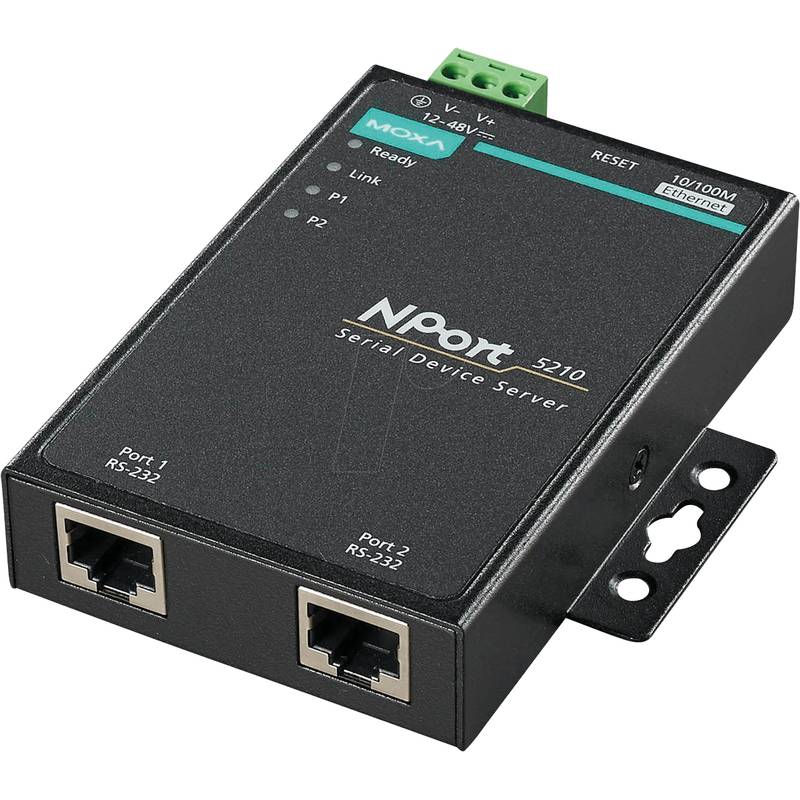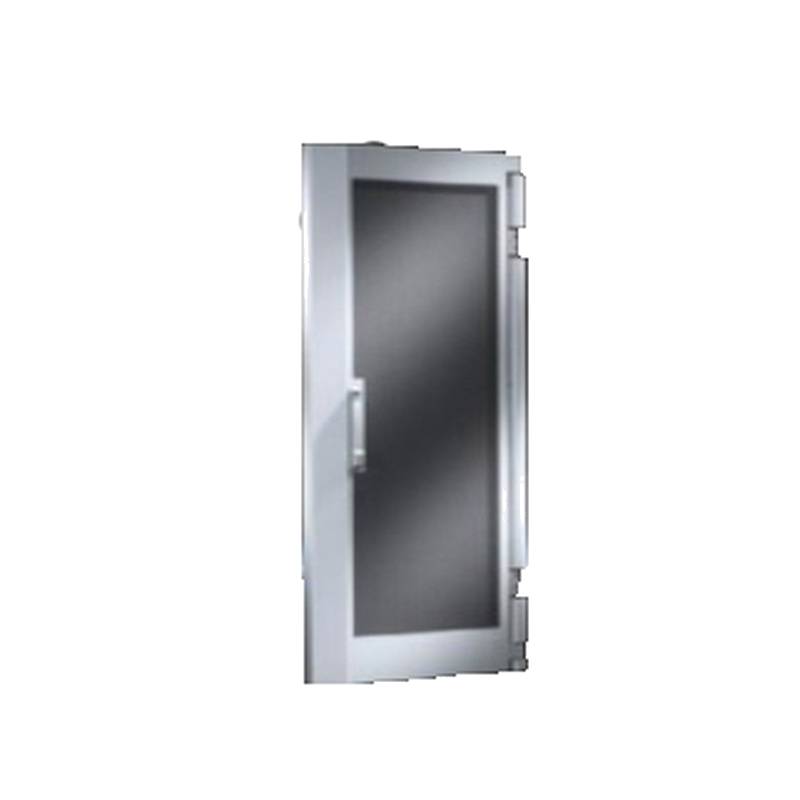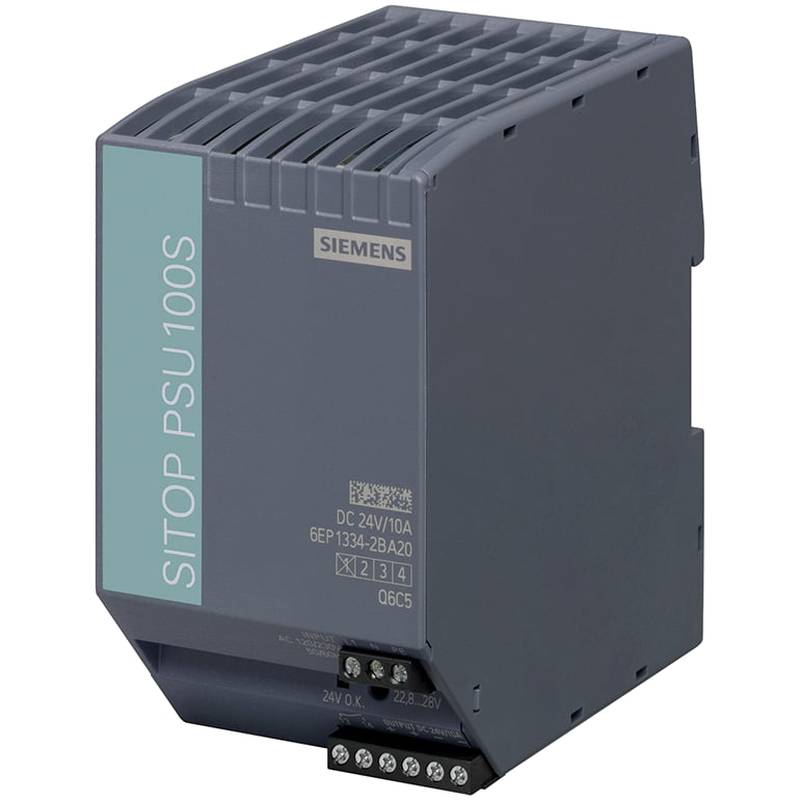
The Siemens 6SL3210-5BE21-1CV0 VFD, a modular design frequency converter, stands out in the industrial automation landscape for its robust performance and flexible integration capabilities. This unit delivers a rated current of 3.1A and a power output of 1.1kW, making it ideal for a wide range of motor control applications. Its inherent modularity simplifies installation and maintenance, while its advanced control algorithms ensure precise speed and torque regulation, leading to significant energy savings and enhanced process efficiency. The Siemens SINAMICS V20 series, to which this VFD belongs, is engineered for straightforward operation and reliable performance in demanding industrial environments.
Product Specifications
| Parameter | Value |
| :--------------------- | :---------------------------------- |
| Product Type | Frequency Converter (VFD) |
| Siemens Order Number | 6SL3210-5BE21-1CV0 |
| Series | SINAMICS V20 |
| Rated Output Power | 1.1 kW |
| Rated Output Current | 3.1 A |
| Input Voltage | 1AC 200-240 V, 50/60 Hz |
| Output Voltage | 3AC 200-240 V |
| Protection Class | IP20 |
| Dimensions (H x W x D) | 170 mm x 73 mm x 155 mm |
| Mounting Type | Wall Mounting, Panel Mounting |
| Communication Interface| Integrated terminal block for I/O |
Core Features & Market Positioning
The Siemens 6SL3210-5BE21-1CV0 distinguishes itself through its intelligent design, prioritizing ease of use and operational efficiency. Its compact footprint and IP20 protection rating make it suitable for installation directly on control cabinets or machine frames, reducing enclosure costs and space requirements. The VFD's ability to provide precise motor control translates directly into energy savings, a critical consideration in today's cost-conscious industrial sectors. Compared to simpler motor starters, this Siemens VFD offers variable speed control, soft start/stop capabilities, and integrated protection features, positioning it as a superior solution for applications demanding enhanced performance and reduced mechanical stress on equipment. Its robust construction ensures reliability even in harsh industrial settings, a hallmark of Siemens automation products.
Key Application Scenarios
This Siemens VFD is exceptionally well-suited for a variety of essential industrial tasks. Its precise control is invaluable for pump and fan applications, where optimizing flow rates and air volumes directly impacts energy consumption and system performance. In conveyor systems, the 6SL3210-5BE21-1CV0 enables smooth acceleration and deceleration, preventing product damage and improving material handling efficiency. Manufacturing processes requiring consistent speed, such as those found in the food and beverage industry or in machine tools, benefit greatly from the stable operation provided by this frequency converter. The unit's versatility also extends to small machinery, packaging equipment, and general automation tasks where variable speed drive is a necessity.
Practical System Integration Guidance
Integrating the Siemens 6SL3210-5BE21-1CV0 into existing systems is streamlined due to its user-friendly interface and straightforward wiring requirements. The VFD is designed for simple commissioning, often requiring minimal parameter adjustments for basic operation. Connections for power supply, motor, and control signals are clearly labeled on the terminal blocks. For standard three-phase motor connections, ensure correct wiring to terminals U, V, and W. Control inputs for start/stop commands and speed setpoints can be readily configured via digital or analog inputs. Programming, if advanced functionality is needed, is accessible through the device's keypad or via dedicated Siemens software, allowing for customization of acceleration/deceleration ramps, motor protection settings, and fault handling routines.
Operation and Risk Mitigation
Operating the Siemens 6SL3210-5BE21-1CV0 VFD requires adherence to standard electrical safety protocols. Ensure all power is disconnected before performing any wiring or maintenance. The unit's integrated diagnostics and fault code system provide crucial information for troubleshooting. Common fault codes, such as F001 (Overcurrent) or F002 (Overvoltage), typically indicate issues with motor load, wiring, or input power quality. Proper ventilation is essential to prevent overheating, and the VFD should be installed in an environment free from excessive dust and moisture. Regular inspection of connections and motor performance can preempt many potential operational problems.
Scalability & Long-Term Value
The modular design of the Siemens 6SL3210-5BE21-1CV0 contributes significantly to its long-term value and scalability. While this specific unit is designed for 1.1kW applications, the SINAMICS V20 series offers a range of frame sizes and power ratings, allowing for easy upgrades or expansion within a larger system architecture. This compatibility ensures that as production demands evolve, control solutions can be scaled accordingly without requiring a complete system overhaul. Furthermore, Siemens' commitment to industrial automation means these drives can be integrated into more complex IIoT and Industry 4.0 platforms, enabling remote monitoring, predictive maintenance, and enhanced data analysis for optimized plant operations.
FAQs
What are the main advantages of using the Siemens 6SL3210-5BE21-1CV0 VFD?
This VFD offers precise motor speed control, leading to significant energy savings. Its modular design simplifies installation and maintenance, reducing downtime. The unit provides advanced motor protection features, enhancing equipment longevity.
The Siemens 6SL3210-5BE21-1CV0 ensures smoother operation compared to direct-on-line starting. It allows for variable speed adjustments to match process demands precisely. Its compact size is ideal for space-constrained control cabinets.
This frequency converter enhances system flexibility and operational efficiency in various industrial applications. It provides reliable performance with a robust construction for demanding environments. The VFD integrates easily into automation systems for improved control.
How do I wire the Siemens 6SL3210-5BE21-1CV0 for a basic motor setup?
Connect the incoming single-phase power (200-240V AC) to the designated L1 and L2 terminals. Ensure proper grounding for safety compliance. The three-phase motor power cables should be connected to the U, V, and W output terminals on the VFD.
For control signals, use the digital inputs to connect your start/stop commands and speed reference signals. External components like contactors or switches can be wired to these terminals according to the manual. Always refer to the specific wiring diagrams in the product documentation for your setup.
Double-check all connections for tightness and correctness before applying power to avoid damage or incorrect operation. Incorrect wiring is a common cause of VFD faults and motor damage.
What are common troubleshooting steps for the Siemens 6SL3210-5BE21-1CV0?
First, check the VFD's display for any active fault codes and consult the product manual to understand the error. Verify that the input power supply voltage is within the specified range for the drive. Ensure all wiring connections are secure and correct.
Inspect the motor for any mechanical issues or winding faults that might be causing excessive current draw. Check for proper motor nameplate data matching the VFD's configured parameters. Ensure adequate ventilation around the VFD to prevent overheating.
If the issue persists, consider resetting the VFD to factory default settings and reconfiguring essential parameters. For complex problems, contacting Siemens technical support or a qualified service technician is recommended.
Can the Siemens 6SL3210-5BE21-1CV0 be used with different motor types?
Yes, this VFD is primarily designed for standard three-phase asynchronous induction motors. Ensure the motor's power and voltage ratings are compatible with the VFD's specifications (1.1kW, 200-240V). For specific motor types, parameter adjustments may be necessary.
When using motors with higher starting currents or special characteristics, review the VFD's parameter settings for motor data optimization. This includes motor rated current, rated speed, and possibly motor pole count. Such adjustments ensure optimal performance and protection.
Always confirm the motor's insulation class and thermal characteristics are suitable for variable frequency drive operation. Over-specification or under-specification can lead to premature failure or inefficient operation.
What is the typical power consumption of the Siemens 6SL3210-5BE21-1CV0 itself?
The VFD consumes a small amount of power when idle or in standby mode, primarily for its internal control circuits. This consumption is minimal, typically in the range of a few watts. The main power consumption comes from the motor it controls.
When operating, the VFD's efficiency typically ranges from 95% to 98%, meaning very little energy is lost within the drive itself as heat. Most of the power drawn from the supply is delivered to the motor. Actual power consumption depends heavily on the motor load.
The energy savings are realized through the VFD's ability to reduce motor speed, thereby reducing the cube of the speed's impact on power draw (e.g., running at half speed can use 1/8th the power). The drive's self-consumption is negligible compared to these savings.
How is the Siemens 6SL3210-5BE21-1CV0 commissioned?
Initial commissioning involves physically installing the VFD and connecting the motor and power supply according to wiring diagrams. Ensure safety interlocks and emergency stop circuits are correctly implemented. Basic parameter setup, such as motor nameplate data, is then performed.
After initial setup, perform a test run at a low speed to verify motor rotation direction and stability. Adjust acceleration and deceleration ramps as needed to suit the application's mechanical constraints. Configure digital and analog inputs for control functions.
Final commissioning involves testing under full load conditions, observing motor performance, current draw, and temperature. Fine-tune parameters for optimal efficiency and response. Document all settings for future reference and troubleshooting.
What are the safety considerations when installing and operating this VFD?
Always ensure the main power supply is de-energized before performing any wiring or maintenance. Follow local electrical codes and industry best practices for installation. Proper grounding of the VFD and motor is crucial to prevent electrical shock hazards.
Ensure the VFD is installed in a well-ventilated area to prevent overheating, and that its enclosure provides adequate protection against environmental factors like dust and moisture. Do not operate the VFD if any damage is visible.
Implement emergency stop functionalities and safety interlocks as required by the application to prevent hazardous situations during operation. Train personnel on the safe operation and emergency procedures related to the VFD.
What does the IP20 rating signify for the Siemens 6SL3210-5BE21-1CV0?
An IP20 rating means the VFD offers protection against solid foreign objects greater than 12.5 mm in diameter, such as a finger. It also signifies no protection against water ingress. This rating typically indicates an indoor, protected environment installation.
This level of protection is adequate for mounting within a control cabinet or enclosure where it is shielded from direct contact and environmental elements. It is not suitable for direct exposure to water, high humidity, or dust-laden atmospheres without additional protective measures.
Therefore, installation within a compliant control panel or an area with similar environmental protection is recommended. This ensures the VFD operates reliably and safely without risking internal damage from external factors.
How does the modular design of this VFD benefit users?
The modular design allows for easy addition or replacement of components, such as communication modules or I/O expansion cards, if needed. This flexibility accommodates future system upgrades or specific application requirements without replacing the entire unit.
Installation and maintenance are simplified, as individual modules can often be accessed or replaced without extensive disassembly. This reduces labor costs and minimizes downtime for the equipment controlled by the VFD.
It also contributes to a cleaner and more organized control cabinet layout. Components can be arranged efficiently, and wiring can be managed more effectively, leading to improved accessibility for service technicians.
What is the typical lifespan of a Siemens 6SL3210-5BE21-1CV0 VFD?
The operational lifespan of a Siemens VFD is generally long, often exceeding 10 to 15 years, provided it is operated within its specifications and maintained properly. Key factors influencing longevity include ambient temperature, load cycles, and the quality of the power supply.
Regular preventative maintenance, such as cleaning ventilation slots and checking electrical connections, can significantly extend the VFD's service life. Avoiding operation under fault conditions and ensuring proper cooling are also critical for longevity.
Component aging, particularly electrolytic capacitors, can eventually limit lifespan. However, Siemens drives are engineered for robustness and reliability, making them a sound long-term investment for industrial automation.














